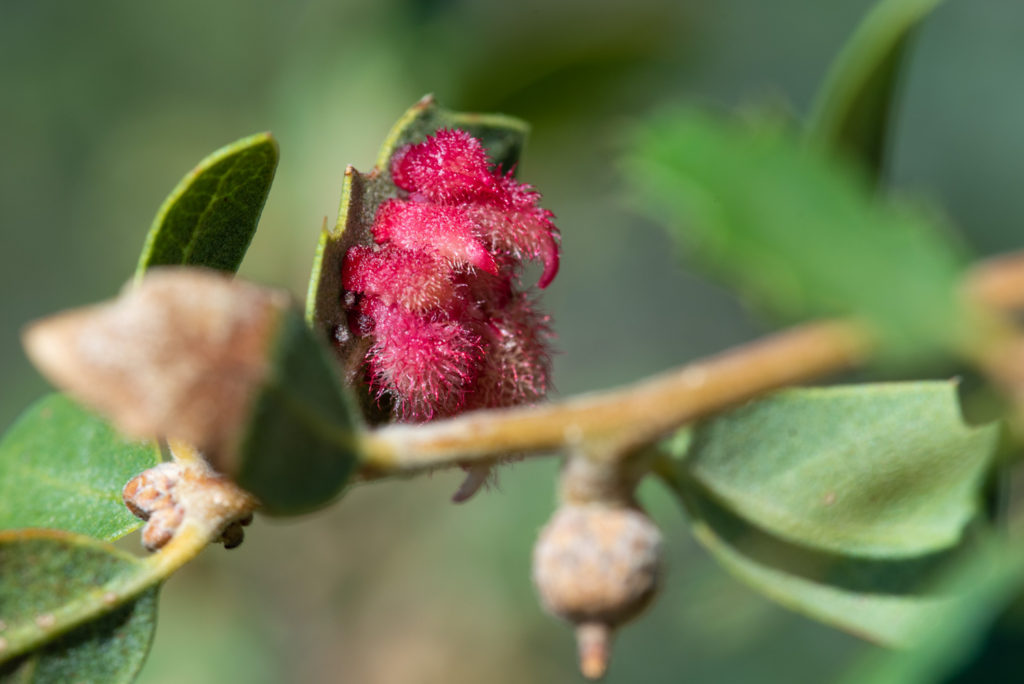
Cynipidae Family
If you’ve ever noticed strange fruit-like appendages hanging from stems or leaves—particularly those of various oak species—while exploring the Los Padres National Forest, there’s a good chance that you were looking at a gall. No, they’re not cancerous or signs of some other disease on a shrub or tree. These benign growths are actually the temporary homes of tiny wasps while they metamorphose.
Description and Range
Most gall wasps have a complex life cycle that begins with hatching on the surface of some part of a plant (usually oaks). As larvae they induce galls as described below. Once emerging from a gall as an adult, these wasps are incredibly tiny: only about 2-3 mm. These adults live for about one week, and they don’t feed.
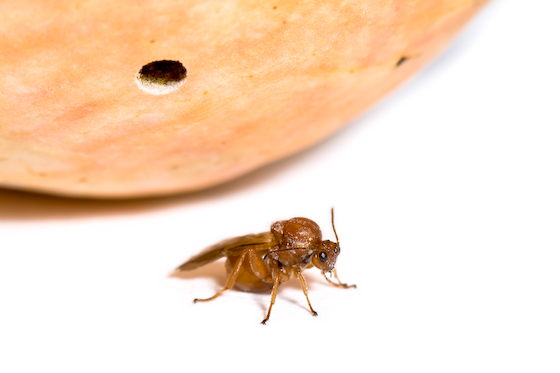
Perhaps most interesting is their reproductive cycle. Many species have alternating generations, meaning all of the adults emerging from galls during one time of the year are female-only, while the adults emerging in a different season have both males and females. Most species have females that can reproduce using parthenogenesis when they emerge by themselves. This means that their eggs are essentially clones of themselves. What’s more, some species appear not to have any males at all.
There are over 800 species of Cynipid gall wasps in North America, with more than 200 of those occurring just on the various species of oaks in California. In fact, California has more gall wasp diversity than any other state in the country. The galls these tiny insects induce are often strangely-shaped, brightly-colored, and overall just fascinating.
Gall Formation
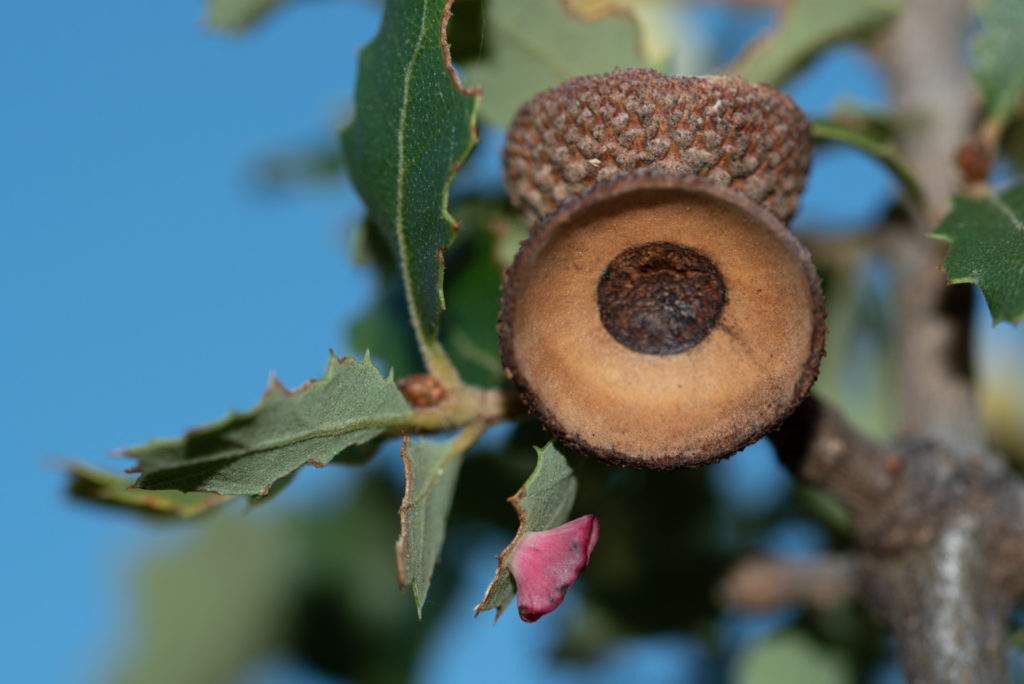
Galls are plant growths (similar to tumors) that are induced by various organisms such as bacteria, fungi, and insects. Gall wasps have evolved to “trick” the plant into forming this growth which they then use for food and shelter as they transform from a larva to an adult. The wasp larvae secrete chemicals that mimic growth hormones in a particular plant upon hatching. The chemicals trick the oak into growing a gall on its flowers, acorns, leaves, or stems. The larva is then encapsulated by the gall as it grows, waiting patiently inside until its metamorphosis is complete.
Galls on Native Oaks
Because of they diversity of oak species in the Los Padres National Forest and the rest of California, there are dozens of species of gall wasps that can be found on these shrubs and trees. Some oak species Oak galls are some of the most interesting in appearance, and most of them are induced by Cynipid gall wasps. Blue oaks—which grow in many areas within the Los Padres—support the greatest number of gall wasp species: forty-two. If you’re lucky, you can see dozens of different types of galls growing simultaneously on a single tree!
Every oak species in the state is host to various species of gall wasps, including scrub oak, live oak (coast, interior, and canyon), valley oak, blue oak, and black oak, all of which you can find in the Los Padres National Forest. Perhaps most common are scrub oak, which occurs in chaparral throughout much of the forest. These are home to brightly colored and intricately shaped galls that often look otherwordly.
Below are a few of our favorite oak galls found in the Los Padres National Forest:

Beaked Twig Gall
Discholscaspis plumbella
Occurs on scrub and blue oaks. Wasps usually emerge in the late fall. One of the more common and striking galls found on our local native oaks.
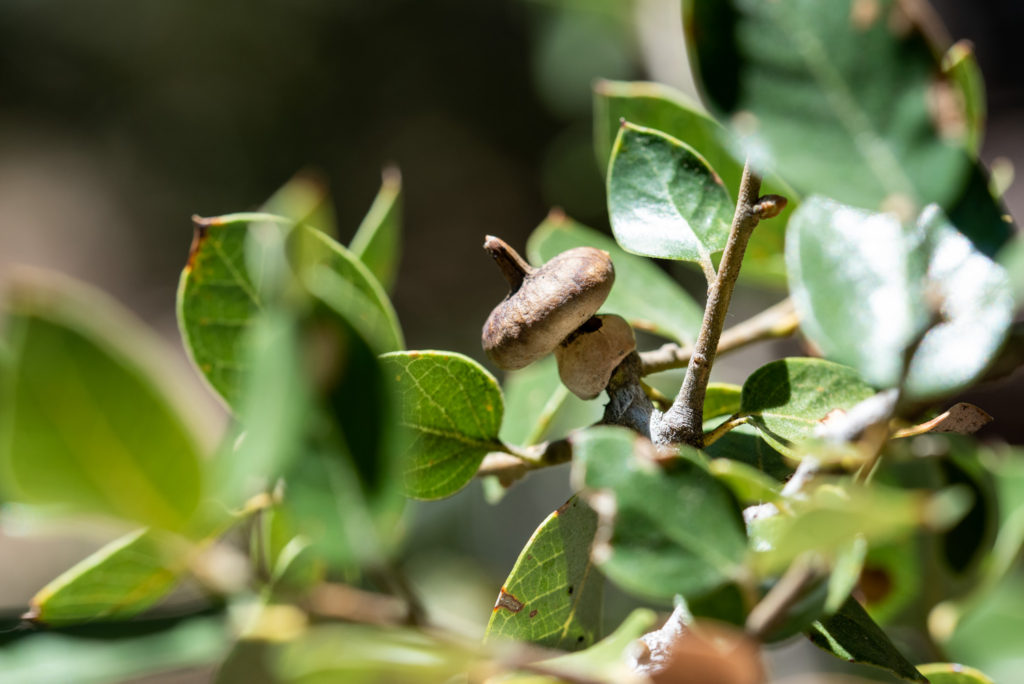
Mushroom Gall
Heteroecus sanctaeclarae
Occurs exclusively on canyon live oaks in the Los Padres. These galls look like miniature mushroom-shaped homes with two stories: the cap-like roof and the larval chamber below. Adult wasps emerge in late spring.
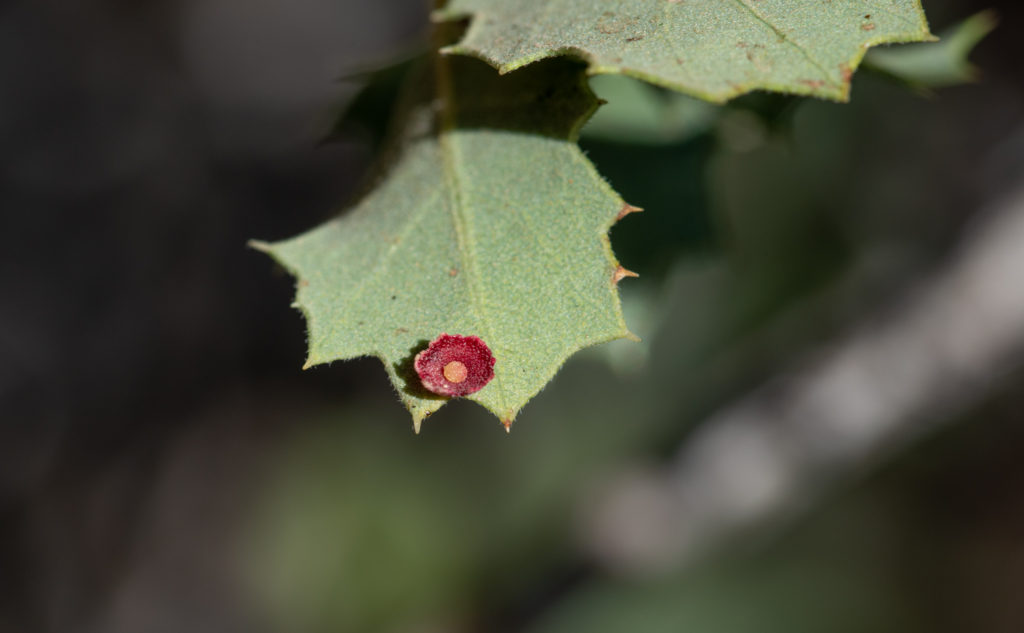
Saucer Gall
Andricus gigas
These tiny galls occur on blue and scrub oaks in the summer. The small bump in the middle is where the wasp larva is located, which emerges in winter or spring depending on the generation.
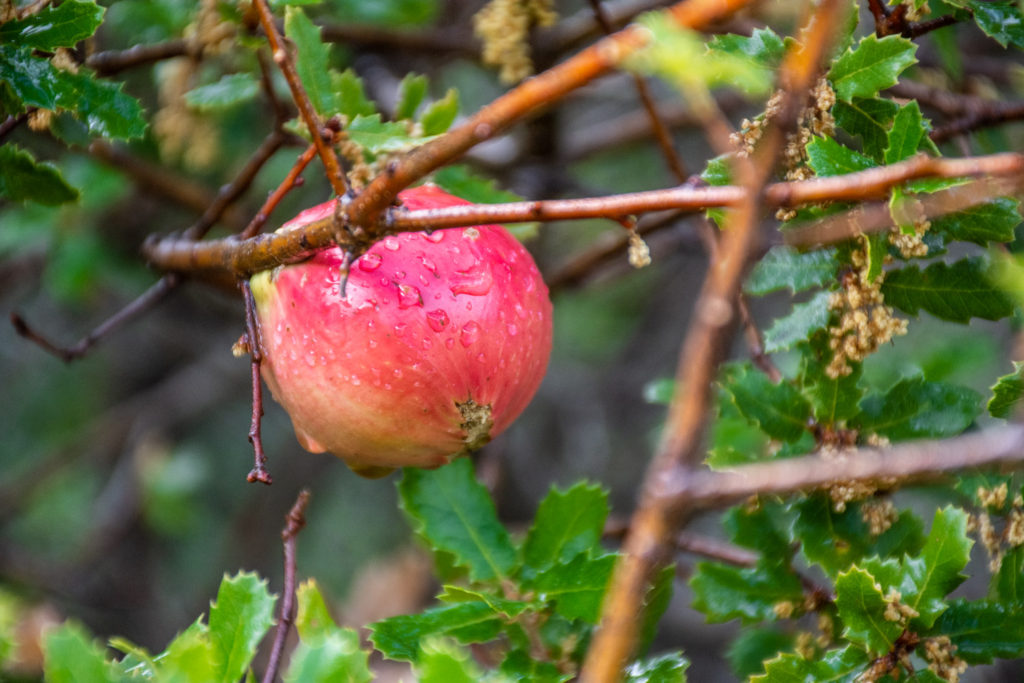
California Gall
Andricus quercuscalifornicus
The largest of all insect-induced galls in the western U.S., the California gall occurs on several species of oaks, including scrub and live oaks in the Los Padres. They are often called “oak apples” due to their appearance when first forming. This species of wasp only contains females.
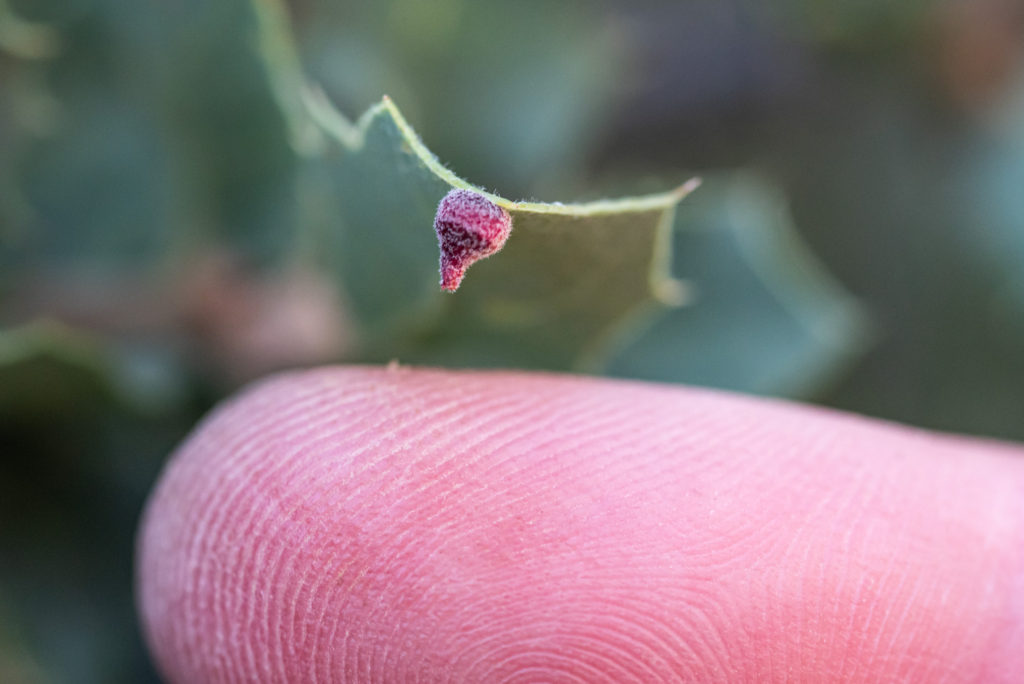
Red Cone Gall
Andricus kingi
These small yet colorful galls occur on scrub, valley, and blue oaks. They can grow in large numbers on a single tree. This particular gall is part of the bisexual generation that grows during the spring.

Spined Turban Gall
Antron douglasii
This pink, strangely-shaped gall occurs on scrub, blue, and valley oaks. The female-only generation grows in the summer and the bisexual generation grows in the fall.

Crystalline Gall
Andricus crystallinus
A common yet spectacular gall that occurs on blue and scrub oaks in the spring and summer. While several grow on a single leaf at once, little damage to the plant seems to occur.
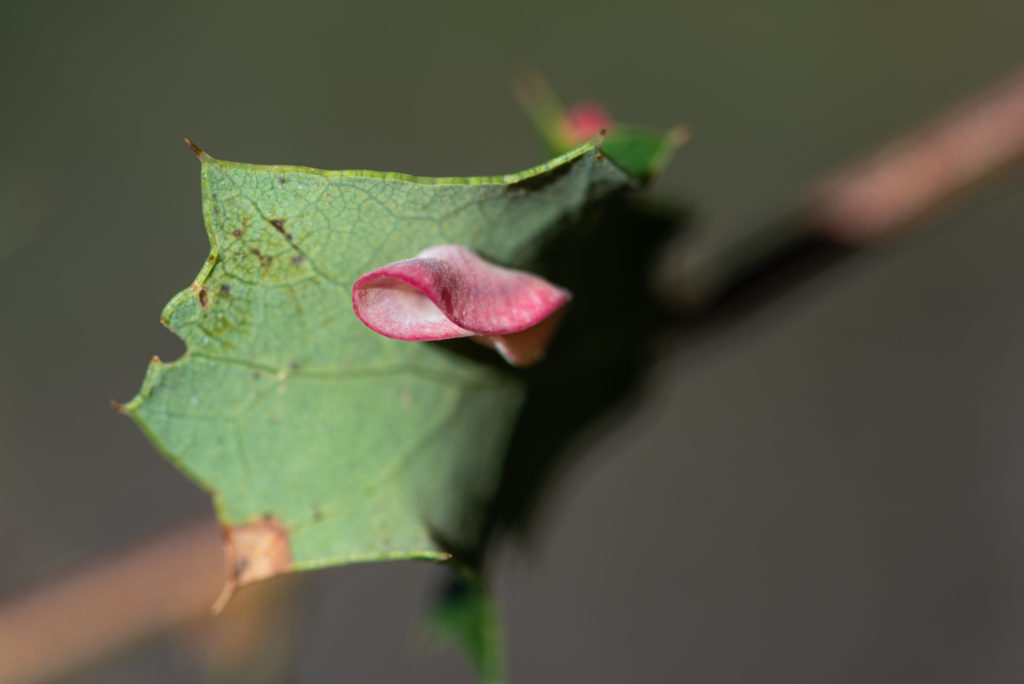
Pink Bow Tie Gall
Undescribed
This striking species has yet to be fully described and given a scientific name. Gall expert Ron Russo first wrote about the species, which seems to occur on blue and scrub oaks. Both of the generations of this species look fairly different from one another.
Importance of Galls
Galls of all sorts play an important role in their respective ecosystems. Many oak galls are subject to foraging by birds such as scrub jays, nuthatches, titmice, sapsuckers, and many others. These birds drill into galls in search of wasp larvae. Some birds even swallow particular galls whole. Mammals such as ground squirrels and chipmunks can be seen biting into large oak galls in search of the starchy inner structure. Woodrats are even known to store galls before later eating them whole!
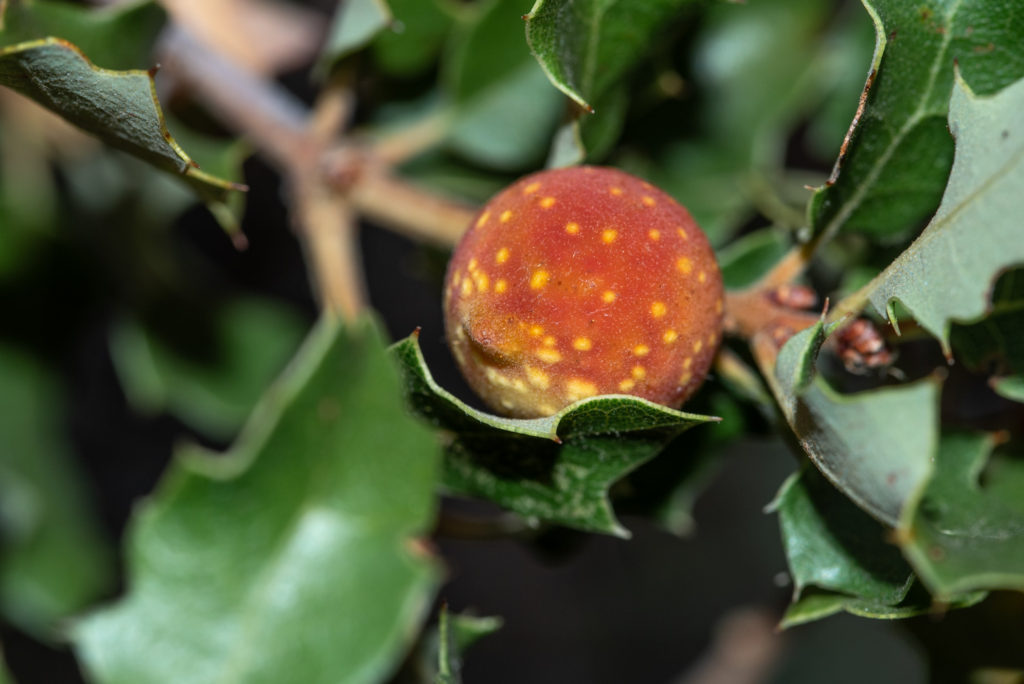
Fascinatingly, there is a whole world of gall parasitism. Some wasp species exclusively parasitize on the galls of other species. There are even “hyperparasites” which only parasitize on the other parasites! Thus, oak galls and the insects that induce their formation are a critical component of a very complex food web that we still know little about.
Native Californians have a long history of using oak galls for various purposes. Many galls are tannin-rich, thus providing an importance source of natural ink. Some tribes used these galls to make ink used as hair dye, basket coloring, and tattoo ink. They also used them to make various substances for medicinal purposes.
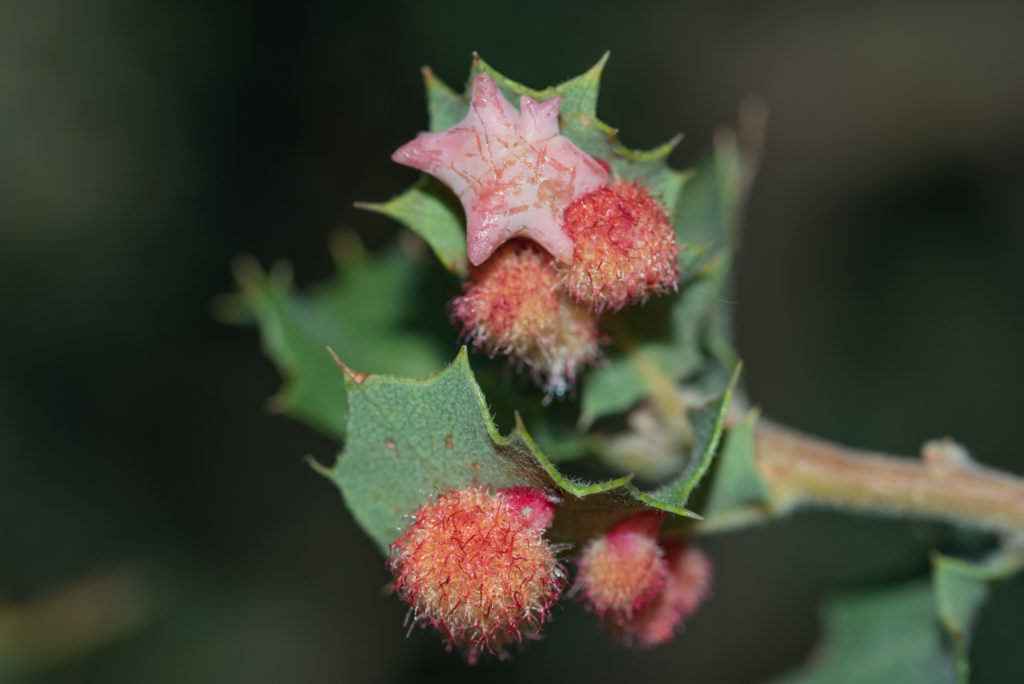
Threats and Conservation
As most gall species are relatively understudied, their threats are not well-understood. As they depend on various oak species for their existence, protection of these trees and shrubs is important for their longevity in California. ForestWatch works to protect all species of oaks in the Los Padres National Forest from unnecessary vegetation clearance and other impacts.
Further Reading
Despite the ubiquity of gall wasps (as well as other gall-inducing organisms), they are still not well-studied. One of the best sources of information about galls in California is Field Guide to Plant Galls of California and Other Western States by Ron Russo. Unfortunately, this book is out of print, though it can be found in some bookstores and online at a relatively high price.
Luckily, there are other books that have great sections on oak galls. Two are available in our Trading Post:
Secrets of the Oak Woodlands by Kate Marianchild
Oaks of California by Bruce Pavlik, Pamela Muick, Sharon Johnson, and Marjorie Popper






